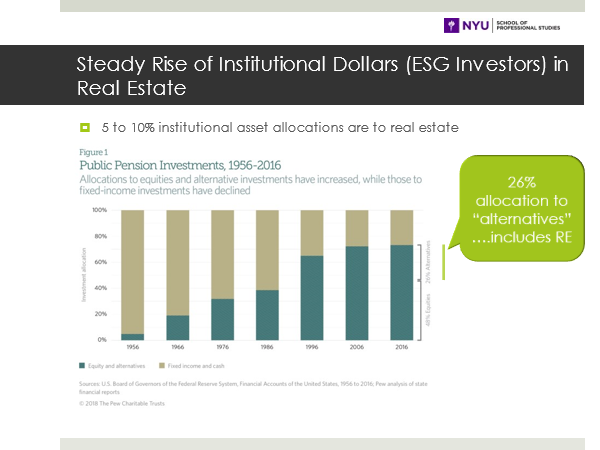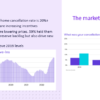Dallas November 2021 Key Take Aways
- Steve Bruszer with Spring Valley Construction Company, shared that this month has been “more of the same” and he shared his frustrations with the continued labor and material shortages even though his backlog is “busier than ever”. Overall, the input prices for construction indexes for non-residential construction has risen 21% in one year.
- Scott Lynn with Cache Realty Capital, shared that a lot of bankers are currently offering great financing in the market. Also, with regards to rates, the “inflation factor is also affecting the capital markets and lenders are hesitant to lock a rate until the day they close the deal”. He feels strongly that if anyone has the opportunity to lock a rate sooner than later, “you should do it as soon as you possibly can”.
- Paul Hendershot with CoStar Group, shared that the hospitality industry is still struggling to “draw people back in” so the job shortage has not gotten better and/or back to “pre-Covid”. He feels that many people are re-evaluating many things, such as the price of daycare compared to just staying at home with one income to support the family. There is currently 57.3 million square feet of industrial space under construction in DFW. Compare that to the entirety of Canada which has 30 million under construction.
- Robert Gunby with RTG Capital, told the group that they are also “very busy” and they currently bought 50 acres in Forney that include 32 existing buildings that they will fix up and then see what happens over the next few months. They also have a multi-family deal in Celina with 336 units off of Legacy. RTG is also looking to get into the tractor trailer parking lots business as well.
- Phil Crone with Dallas Business Association, shared with everyone that in Dallas County it’s like “playing whack-a-mole” when it comes to building materials. When lumber prices go down, drywall prices go up; when cement goes down, pvc pipe goes up, etc. Unfortunately, Phil doesn’t see it changing in the foreseeable future and there is nothing he can do other than to have hope. Recently, the Commerce Department recommended doubling the tariff on Canadian lumber so they are looking at what that may look like, but it may mean lumber will start “coming in over the next 30 days”. All the Canadian producers will send as much as they can over the border which will temporarily improve construction, but he doesn’t see that continuing into 2022 on the lumber side of things. Labor is still very challenging regarding residential construction whereas they need approximately 2 million jobs filled over the next three years in the sector and that will be “hard to come by” but they continue to work on it and are hopeful that things will begin changing for the better sooner than later.
- Guest speaker Stuart Brodsky, Assistant Clinical Professor at NYU’s Schack Institute, shared “An Introduction to ESG (Environmental, Social and Governance): Intersections with Real Estate” presentation and below are some of the highlights:
- ESG is essentially an inquiry by asset management when evaluating the risks and opportunities of investing in a company: Environmental, Social and Governance.
- A tool of the professional asset management industry is the objects of due diligence by a ~$150 T global industry: pension funds/super annuities; sovereign wealth funds; endowments and foundations.
- Investor (Asset Managers’) Goals and the role of ESG:
- Asset managers pursue superior financial returns from their investments.
- Asset managers seek to stimulate social (community-wide) benefits by encouraging promulgation of just and equitable practices among corporations and supply chains.
- Asset managers intend to stimulate companies to make this happen, for the benefit of annuitants.
- Recent milestones in Emergence of Corporate Social Practices are:
- Walmart funding college education of employees: “the largest U.S. private employer commits to invest nearly $1 billion over the next five years in career-driven training and development”.
- Hewlett Packard goals were to be the most “sustainable and just technology company and achieve 50/50 gender parity in leadership by 2030”. “It’s why HP is taking bold steps to drive Climate action, protect human rights and accelerate digital equity”.
- ESG Allocations Surge and Why?
- $17 trillion of managed assets pursue “sustainable” investments.
- Employers adopt policies to attract millennials, such as: attracting them to your workplace requires providing them retirement benefit programs aligned with their interests.
- C-suite level of interest or attention to ESG is unabated in 2020/2021 period.
- Nearly 30% of all Assets under Professional Management are subject to ESG Screening. According to Bloomberg, global ESG assets under management grew from $22.8T in 2016 to $30.6T in 2018. Also, ESG assets under management could climb to more than a third of the projected $140.5T global total by 2025.
- ESG and Real Estate show that the institutionalization of real estate as an asset class with institutional investors; National and international investors diversify into real estate across the U.S. markets, not just NYC, Chicago, Dallas and Los Angeles; and investors and hedge funds initiate ESG protocols in real estate (multiple recent real estate firms hired Sr. VPs and VP’s of ESG.
- The impact on the Real Estate Sector:
- RE developers, investors, and operators increasingly stimulated to adopt ESG protocols – demonstration of corporate citizenship strategies.
- Recommended starting points – create a task force to ramp up internal initiative and dialogue.
- Cross-reference new efforts to UN Sustainable Development Goals.
-
- Look at practices of companies you aspire to be like 5 years from now.
- Serve your clients in support of their ESG efforts.






Recent Comments